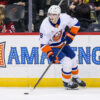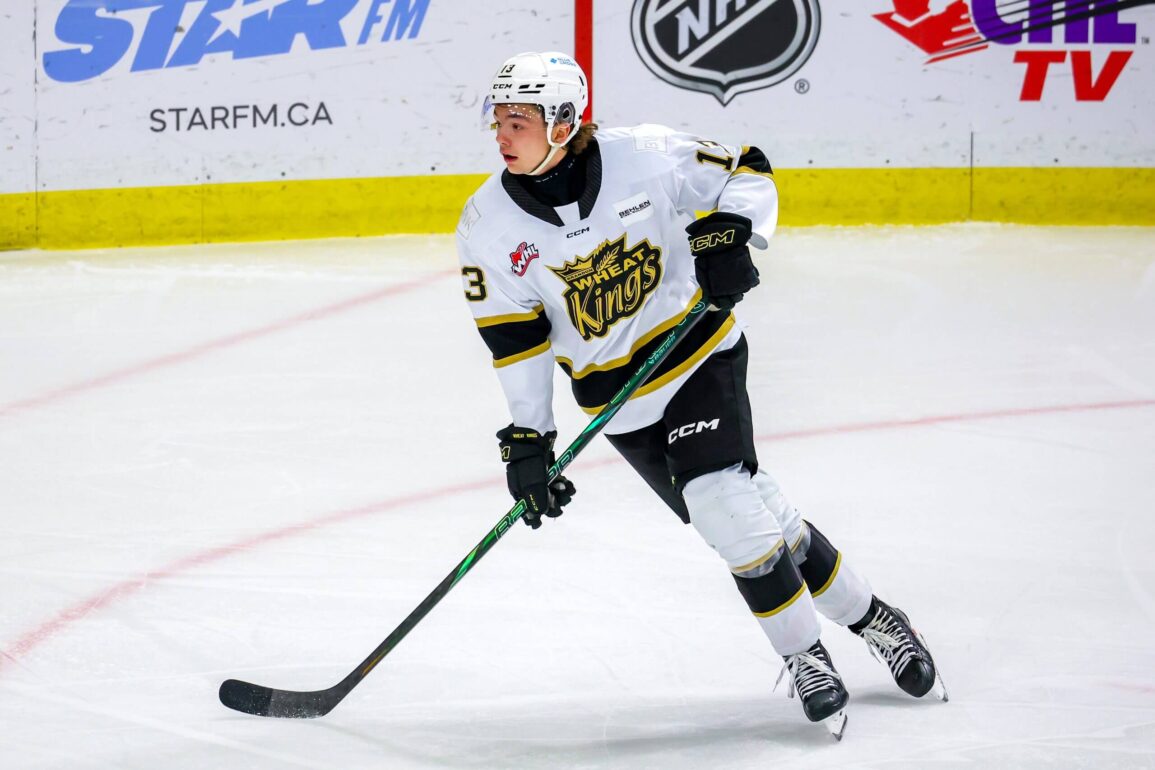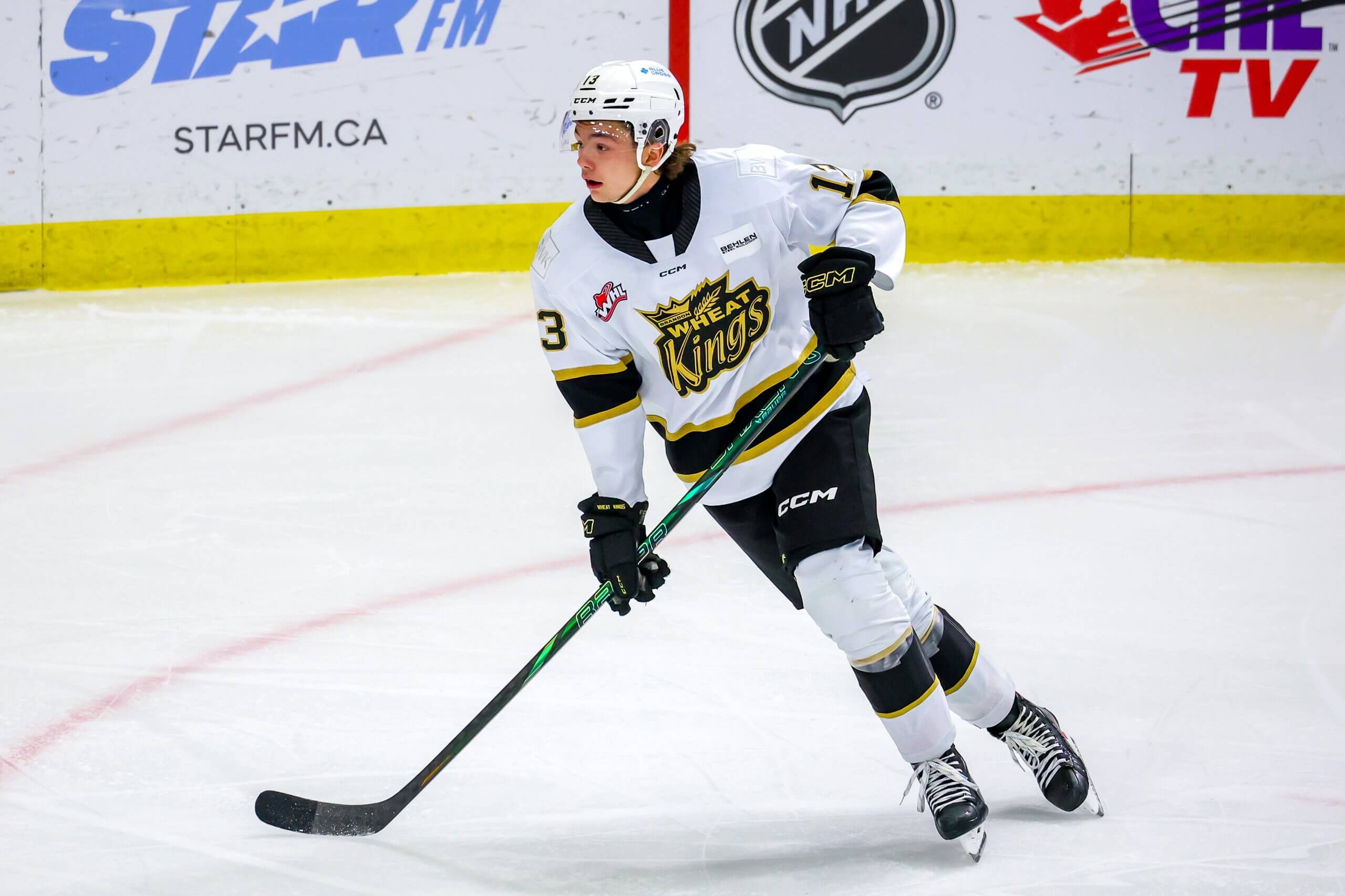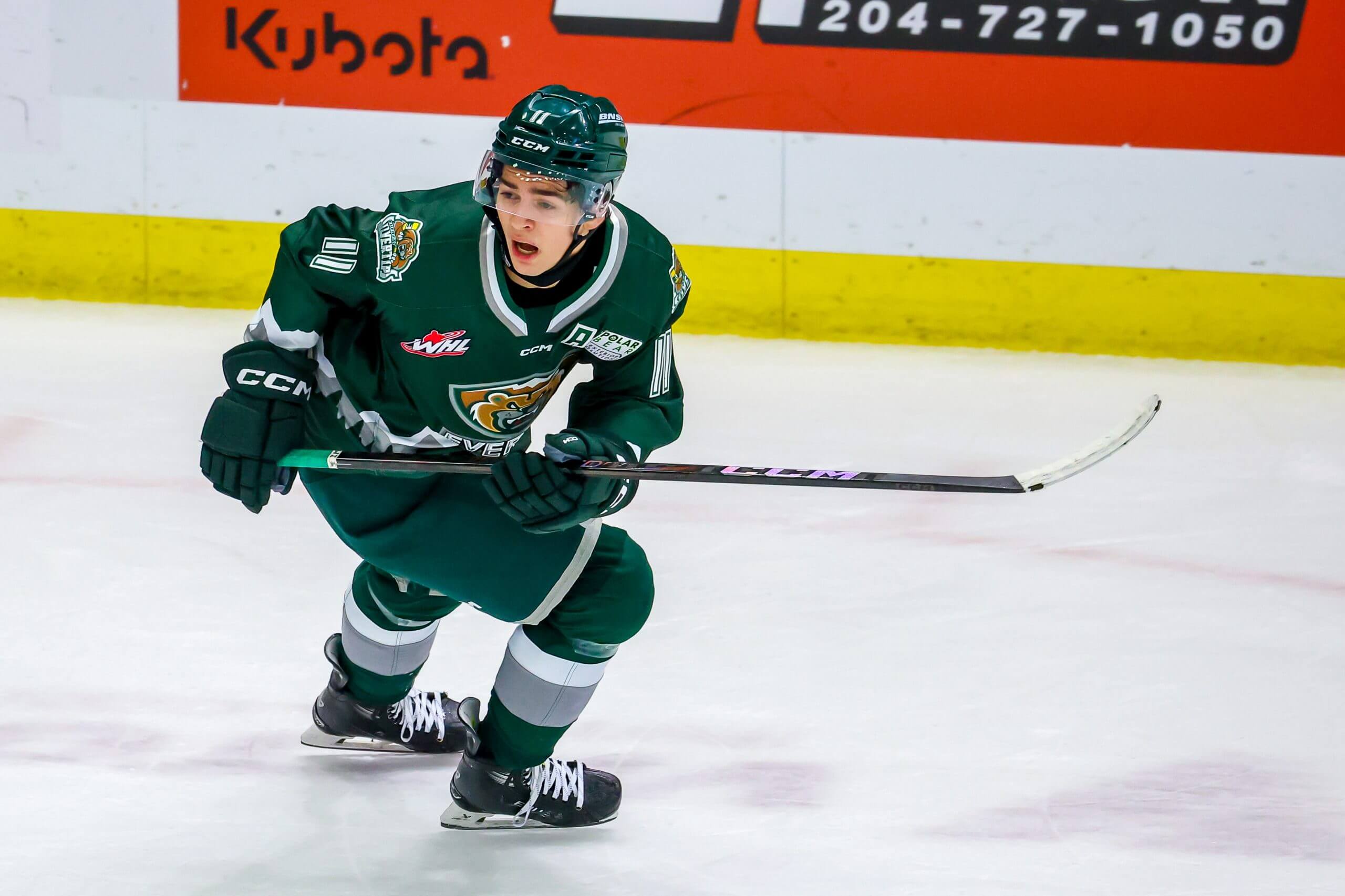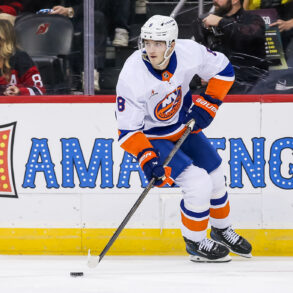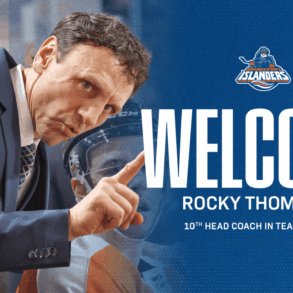By Corey Pronman, Scott Wheeler and Max Bultman
With just one week until the 2025 NHL Draft kicks off in Los Angeles, mock draft season is in full swing.
And that includes over at “The Athletic Hockey Show,” where the Prospect Series crew — made up of The Athletic’s prospect experts Corey Pronman and Scott Wheeler, Flo Hockey’s Chris Peters and show co-host Max Bultman — convened this week for their annual live mock draft of the first round, predicting (and debating) what they think will happen in the draft’s first 32 picks.
Advertisement
You can listen to the full episode on “The Athletic Hockey Show” feed, but for those who just want the overview, we wrote up the draft results here, as well as some details on the predictions — and the pushback — the writers made on the show.
We went into more detail on the earlier picks here than the later ones, so again, if you want to hear more specifics, you can listen to the episode in full.
Here’s how the four of us had it, alternating which host made each prediction.
1. New York Islanders: Matthew Schaefer, LHD, Erie (OHL)
Schaefer is the favorite to be picked first, and fittingly, there wasn’t any pushback from our panel when Bultman slotted him to the Islanders here.
“The value of an all-situations (is) obviously extremely high,” Bultman said. “I know he didn’t play that many games (due to injury this season), but as we’ve talked about on the show, when he did, he was really impressive. He also seems like a really impressive kid, and I just think he seems like the kind of kid you’re going to build around in the next phase of your franchise.”
2. San Jose Sharks: Michael Misa, C, Saginaw (OHL)
Wheeler went with what’s become the “chalk” pick here in Misa, but noted he’d heard coming out of the combine that the Sharks may have “some sneaky interest in Caleb Desnoyers and Anton Frondell” that could at least make it a debate. After follow-up reporting since then, he still feels content to stick with Misa, but that it’s a conversation is noteworthy.
Pronman wondered what the logic would have to be for the Sharks to pick one of Frondell or Desnoyers over Misa, and Wheeler pointed to Desnoyers in particular being perhaps “the perfect 2C to slot behind Macklin Celebrini, and that he fits that role to a ‘T’ maybe more than some of these other players do.”
Still, “Michael Misa is still the consensus choice here,” Wheeler said. “(6-foot-1) center who had 134 points, 60 goals, we’ve talked about it — I think he’s the guy here.”
Advertisement
3. Chicago Blackhawks: Anton Frondell, C, Djurgården (Sweden)
Peters went with Frondell to Chicago, rationalizing, “I think they want to get bigger here, and I think that Anton Frondell helps them do that, and he also helps them in terms of being a high offensive performer, a guy with good two-way value.”
Peters also noted the positional flexibility Frondell could give the Blackhawks with young forwards Connor Bedard and Frank Nazar.
“If Bedard is a long-term center, that’s your No. 1 guy, and then Frondell’s a natural No. 2. But if (Bedard ends up a winger), then you potentially have a No. 1 center option in Frondell.”
And if all three turn out to be viable top-six centers, which is entirely possible, that’s a great situation to be in.
4. Utah Mammoth: Caleb Desnoyers, C, Moncton (QMJHL)
Pronman noted the buzz around Brady Martin high in the draft, saying “the interest in (Martin) is massive, and I think he’s going very early in this draft.”
He pointed out, though, that Martin and Desnoyers played on the same team at two different events this year, for Team Canada at the Hlinka Gretzky Cup and in the CHL-U.S. NTDP series, and “Caleb was way better both times, played bigger roles both times.”
“When you look at what he did this year, the performance he had on Moncton, regular season and in the playoffs, while basically playing with half a hand most of the time … I don’t think you can go by this guy at 4.”
5. Nashville Predators: Brady Martin, C, Soo (OHL)
Bultman felt the Predators needed a center with this pick, boiled the debate down to Martin and Boston College’s James Hagens, and, nodding to Pronman’s comment on the buzz around Martin, went with the hard-nosed pivot from the Soo as his prediction.
Pronman pushed back on Bultman, lamenting that there were centers available with more size than the 6-foot Martin or 5-foot-11 Hagens. “There’s two: Jake O’Brien and Roger McQueen,” he said. “Why not them?”
Advertisement
Bultman pointed to McQueen’s back injury, and the magnitude of the risk in picking him at No. 5. And likened the debate between O’Brien and Martin to picking between another highly intelligent (but skinny) recent top-five pick in Columbus’ Kent Johnson, versus a popular Martin comparable: newly-crowned Conn Smythe winner Sam Bennett.
“That’s where I would go Martin,” Bultman said.
6. Philadelphia Flyers: James Hagens, C, Boston College (NCAA)
Wheeler opened by saying he thinks the Flyers would “love to get Brady Martin here,” drawing a comparison between Martin and former Flyers captain Mike Richards. With Martin gone, though, he instead went with Hagens, giving the nod to him over O’Brien.
“I know that skews them small in a prospect pool that’s already a little bit small, and an NHL roster that’s already a little bit small, but I think there’s enough of a gap between Hagens and O’Brien — maybe not leaguewide, but still amongst the consensus. And it sounds like there’s a chance that James Hagens might fall a little bit, but I think the Flyers could take that swing, and if he hits, he’s the center of the future for Matvei Michkov, and you find someone big and meaty to play on that other wing.”
7. Boston Bruins: Jake O’Brien, C, Brantford (OHL)
Peters considered the highly skilled Martone, but ultimately opted for the playmaking center O’Brien, who put up 98 points in 66 OHL games this past season and didn’t turn 18 until this week. With a true star on the wing in David Pastrnak, O’Brien profiles as a player who could certainly pair well with him in the future.
“What Jake O’Brien showed this year, to me — and yes, he does need to get stronger, he needs to tack on muscle and different things — is that he is a legitimate offensive creator,” Peters said. “He can make things happen, he can make guys around him better.”
8. Seattle Kraken: Porter Martone, RW, Brampton (OHL)
While making the Boston pick, Peters noted the surprise of Martone, who was ranked third in this group’s list just weeks ago, still being available after seven picks, noting that it speaks to a “desperation for centers.”
Advertisement
Martone’s slide ended here, though, with Pronman projecting him to Seattle, which is in a great position to take him.
“They have their centers,” Pronman said. “They have Shane Wright, they have Matty Beniers, they have Berkly Catton — one of those guys will flex to the wing, probably Catton, long-term. But they take Martone, and now they’ve got a top six that they’re very happy with.”
9. Buffalo Sabres: Roger McQueen, C, Brandon (OHL)
McQueen is a highly intriguing prospect, as a 6-foot-5 center who can skate and possesses real skill. On upside, he belongs much higher than this. And while the back injury that cost him much of this season is the obvious reason for his slide to this point, Pronman pointed out the league may not be as scared off by the risk of that injury as our group had been.
“The NHL drafted Cayden Lindstrom (who was a similar-profile player, and also had a back injury) at No. 4 last year,” Pronman said. “And I guess I would ask why we haven’t mentioned his name more in this conversation. … I feel like, as a hockey player, he’s better than Jake O’Brien. I think as a hockey player, he’s probably better than Brady Martin, too.”
McQueen’s slide ended here, though, with Bultman projecting him to land with the Sabres at No. 9.
“I think this is the point of the draft where the gap between McQueen and the next player starts to get harder to justify,” Bultman said, noting that McQueen would bring much-needed size to a Sabres team that has many small, skilled forwards and could use more size.
10. Anaheim Ducks: Kashawn Aitcheson, LHD, Barrie (OHL)
After nine straight forwards following Schaefer at No. 1, we finally have the second defenseman going off the board, with Wheeler predicting the hard-hitting Aitcheson to the Ducks.
“I do think, that with these forwards gone, that you’re more likely to see a Kashawn Aitcheson here, or a Jackson Smith here than you are to see a Justin Carbonneau, or a Carter Bear, Lynden Lakovic, those types sort of jump into this range,” Wheeler said, noting that one caveat could be speedy right-shot winger Victor Eklund.
Advertisement
Still, he went with Aitcheson, saying the Barrie defender “gives them another physical, tough, competitive kid in the mold of (2024 Ducks first-round pick) Stian Solberg a year ago.”
11. Pittsburgh Penguins: Radim Mrtka, RHD, Seattle (WHL)
After going nine straight picks with no defensemen, now we have them back-to-back with Peters projecting the 6-foot-6 righty Mrtka to the Penguins, who he noted “need everything.”
“I think the upside of Mrtka, with the potential he could one day be a top-four defenseman, a guy that’s going to give you the good mobility, the size, all those different things. I think he’s going to play, and then he complements a guy like an Owen Pickering, who has size, so you’re starting to build a bit of a bigger blue line.”
12. New York Rangers: Jackson Smith, LHD, Tri-City (WHL)
Pronman noted one key wrinkle with this pick: the Rangers have to decide 48 hours before the draft whether to give this pick to Pittsburgh, as part of the trade that landed the Rangers J.T. Miller, or keep it and give up their 2026 first-round pick.
Pronman reasoned that while the Rangers may not be able to get a premium center at 12, they should still have a decent shot at getting one of the three legit defense prospects in this range in Mrtka, Aitcheson and Smith. And in this case, that’s exactly how it played out, with the Rangers capping a mini run on defensemen with Smith, a 6-foot-4 blueliner who can really skate.
“He’s the kind of defenseman they’ve tended to target,” Pronman said. “And you’re hoping he’s going to be a very good top-four D for a long time.”
13. Detroit Red Wings: Victor Eklund, LW, Djurgården (Sweden)
Eklund is a fashionable pick for the Red Wings, who have already used five first-round picks to draft a player out of Sweden in six years under Steve Yzerman, and whose preference for high-compete prospects is abundantly clear. Maybe that makes it feel too obvious. But Bultman projected this way regardless.
Advertisement
“It checks too many boxes,” Bultman said. “The only hesitation I have is it would be another small winger, which at the NHL level, they are a little heavy on. Patrick Kane’s not going to be there forever — probably won’t even be there by the time Victor Eklund makes the NHL — but still with Lucas Raymond and Alex DeBrincat, that would be three sub-six-foot wingers in your top six. That’s a little itchy. But I don’t think there’s a great alternative, and he checks so many other boxes for them: it’s the high compete, the motor, he is a good scorer, he can really shoot it.”
14. Columbus Blue Jackets: Lynden Lakovic, LW, Moose Jaw (WHL)
Wheeler noted that the Blue Jackets are increasingly deep on the wing but could use a left-shot winger, and felt Lakovic’s size and ability to move up and down the lineup made him a fit.
“We know what Adam Fantilli and Kent Johnson are now, and I think behind those guys, you start to wonder about who slots behind (Kirill) Marchenko and (Johnson) and Fantilli, and who could play potentially with some of those guys, or potentially play off of them in a middle-six role,” Wheeler said, noting Lakovic’s skill and skating at 6-foot-4.
15. Vancouver Canucks: Justin Carbonneau, RW, Blainville-Boisbriand (QMJHL)
Peters debated between Carbonneau and center Braeden Cootes for this pick, but ultimately landed on Carbonneau, a high-scoring winger out of the QMJHL because of his blend of “competitive drive and … offensive capability.”
“I think as you move forward, Carbonneau, to me, is the guy that kind of gives you a little bit more of that identity, and could fit a real need there,” Peters said.
16. Montreal Canadiens: Braeden Cootes, C, Seattle (WHL)
With two back-to-back picks in the middle of the first round, Pronman posited that “in an ideal world, you’re leaving this draft with a center and a D at 16 and 17, that’d probably make some sense, or two forwards.” He debated highly skilled forwards Cole Reschny and Carter Bear with the first of those two picks, but ultimately pivoted to Cootes, the top center remaining.
He noted how much skill the Canadiens already possess high in their lineup, between Nick Suzuki, Cole Caufield, Juraj Slafkovský and now Ivan Demidov all feeling like strong power-play options for the foreseeable future.
Advertisement
“You feel really confident with the amount of skill you have in your organization, so I don’t think you feel compelled to bring in a Cole Reschny here,” he said. “I think you can never have too many centers, though, so while Carter Bear is tempting here, and the offense and skill he brings, I think Braeden Cootes has plenty of skill as well, to go with some tenacity. He can be a legit middle-six center in the NHL.”
17. Montreal Canadiens: Carter Bear, LW, Everett (WHL)
18. Calgary Flames: Cole Reschny, C, Victoria (WHL)
19. St. Louis Blues: Cameron Reid, LHD, Kitchener (OHL)
20. Columbus Blue Jackets: Logan Hensler, RHD, Wisconsin (NCAA)
With Montreal’s second pick, Bultman had the Canadiens land the skilled, tenacious Bear in addition to Cootes, bringing skill and fearlessness to that forward mix. After that, Wheeler had Calgary land Reschny, noting the Flames’ need for a top young center, particularly one with his skill level.
“You wonder about the size, maybe a little bit as a 5-10 and a half center, but Cole is one of the most complete centers in this draft class,” Wheeler said. “I think he sticks as a center in the NHL because of his competitiveness and his defensive awareness.”
Reid then went to the Blues, with Peters noting the puck-moving element he could bring to the St. Louis blue line, and praising his hockey sense, vision and mobility. Another puck-mover, Hensler, landed with the Blue Jackets, with Pronman saying he’d be surprised if Columbus doesn’t get at least one defenseman from its two top-20 picks.
21. Ottawa Senators: Jack Nesbitt, C, Windsor (OHL)
22. Philadelphia Flyers: Daniil Prokhorov, RW, Dynamo St. Petersburg (MHL)
23. Nashville Predators: Sascha Boumedienne, LHD, Boston University (NCAA)
24. Los Angeles Kings: William Horcoff, C, Michigan (NCAA)
25. Chicago Blackhawks: Malcolm Spence, LW, Erie (OHL)
26. Nashville Predators: Joshua Ravensbergen, G, Prince George (WHL)
A lot of size came off the board in this cluster of picks, with Nesbitt, Prokhorov and Horcoff all hulking forwards who can bring edge to their respective teams. The same is true for Spence, who at 6-foot-1 might be smaller next to those other three (all of whom are 6-foot-4 and above), but is still a competitor.
There were also two Predators picks in this bunch, with Nashville coming away with the puck-moving Boumedienne — with Peters pointing to his skating, and the “pop” he could bring — and the draft’s first goalie in Joshua Ravensbergen. Wheeler noted that the Predators just traded a top goalie prospect in Yaroslav Askarov, but that Ravensbergen’s timeline lines up much more naturally with Juuse Saros’ career arc.
27. Washington Capitals: Milton Gästrin, C, MoDo (Sweden)
28. Winnipeg Jets: Blake Fiddler, RHD, Edmonton (WHL)
29. Carolina Hurricanes: Henry Brzustewicz, RHD, London (OHL)
30. San Jose Sharks: Bill Zonnon, LW, Rouyn-Noranda (QMJHL)
31. Philadelphia Flyers: Semyon Frolov, G, Spartak Moscow (MHL)
32. Calgary Flames: Vaclav Nestrasil, RW, Muskegon (USHL)
There was a bit of everything in this final cluster, with a two-way center in Gästrin going to the Capitals, a big-body shutdown D in Fiddler going to the Jets and even Carolina taking a D in the first round for the first time since 2016.
Advertisement
The surprise, though, might have been in seeing a second goalie come off the board in the first round, with Frolov going to the Flyers. Peters reasoned that with Philadelphia having three first-round picks, it could be emboldened to take that kind of chance late in the first round, even though the Flyers do have some young goaltending (and specifically some young Russian goaltenders) in the system already.
“But I think this is an upside play, it’s a long-term play, and it is a guy with some tremendous upside,” Peters said.
(Photo of Porter Martone, Blake Fiddler and Matthew Schaefer: Michael Miller / ISI Photos / Getty Images)
This post was originally published on this site be sure to check out more of their content.


